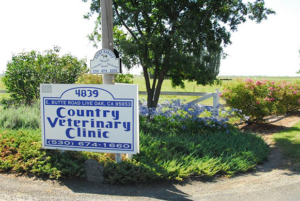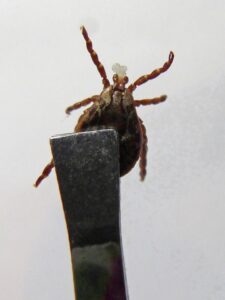Fall is just around the corner and with the cooler temperatures and shorter days come some brand-new considerations that we need to make when it comes to the safety and happiness of our beloved animals. We have put together this list of 10 valuable fall safety tips for conscientious pet parents.
1. Keep Your Pet Warm
Depending on where you are located, you may find that the temperature drops rapidly during the fall season. Nevertheless, bright sunshine can often make it appear warmer than it really is. Pets feel the cold too, so it’s important to take steps to keep your pet’s body temperature stable and comfortable. They may have spent a long time outside during the summer, but they’ll need to be indoors more now, particularly in the early morning and late evenings. Let their winter coat grow back too as this will provide natural insulation.
2. Make Sure Your Pet Can Be Seen
Shorter days mean that you and your pet will be spending more hours in darkness than you’ve been used to for a while. It’s harder to be seen in the dark, particularly if you are wearing darker-colored clothing or your pet has a black, brown, or grey coat. Invest in a reflective collar and leash for them, and similar gear for yourself and stay safe when you are out at night.
3. Stay Up To Date With Preventative Care
Parasites don’t go away because the temperatures drop. In fact, ticks can survive all year round meaning that consistent preventative care is essential if you are to keep your pet safe from their bites and the diseases that they carry. Fallen leaves present a perfect playground for pets and an ideal location for ticks to hide, so keep them up to date with their preventatives and check them thoroughly for ticks whenever they come inside.
4. Beware Of Antifreeze
Many people decide to top up their vehicle’s antifreeze in the fall to ensure their engine doesn’t seize if the temperature plummets. Antifreeze has a very sweet smell and taste which makes it appeal to any animals who may be passing by, but it is extremely toxic and will poison your pet if it consumed. Store bottles well out of reach and clear up any spillages right away.
5. Be Careful With Holiday Treats
Fall also provides us with the opportunity to indulge in some delicious treats that we might not enjoy at other times of the year. Nevertheless, it’s important to take care when eating these around our precious pets since many can’t safely be shared with our animals. Pumpkin is a fall staple, but many store-bought pies contain artificial sweeteners and other ingredients that can be toxic to pets, while corn on the cob can cause gastrointestinal injury or obstruction if gobbled too quickly. Meanwhile, Halloween candies often contain the artificial sweetener xylitol which can be fatal even in small doses. Stick with your pet’s usual diet and keep the holiday treats for the humans.
6. Protect Their Paws
Ice and snow aren’t necessarily reserved for winter, and it’s important to protect your pet’s sensitive paws from the harshness of extreme cold. Cold weather, ice, and salt used to melt ice and snow can cause your dog’s paw pads to dry out and crack, and ice crystals can cling to long hairs between their toes and cause pain and skin damage. Think about protecting your pet’s paws use booties which are designed to keep them safe, warm, and provide enough grip for them to move around safely.
7. Halloween Horrors
Halloween might be lots of fun for humans, but many pets find the holiday stressful. People in strange costumes and unusual sights, sounds, and smells can contribute to one scared or anxious furbaby. Decorations pose their own risks, from potential tangles in cobwebs to precarious open flames, while opening the door frequently to visitors could give your pet the opportunity to escape. Be mindful of the potential dangers and take steps to keep them safe!
8. Get Your Pet Microchipped
If you and your pet do become separated, perhaps as a result of them escaping or becoming lost when on a walk in the dark, you are more likely to be reunited with them if they are microchipped. Microchipping is the most effective method of attaching your information to your pet so that you can be contacted if they are found. Unlike collars and tags which can fall off or be removed, microchips are permanent and can’t be tampered with. If your pet isn’t chipped already, ask your vet about the procedure today. If they are chipped, make sure that your details are up to date.
9. Make Holiday Arrangements Now
If you will be relying on onboarding, pet sitting, or doggy daycare at any point during the fall or winter holidays, it’s worthwhile securing your pet’s spaces now. Many facilities and services get booked up well in advance, and since it is in your pet’s best interests to make sure that they are left in the capable hands of a professional, it’s important to plan ahead so that you aren’t left with less desirable options for their care.
10. Consider Joint Supplements
Cold weather can play havoc with certain health conditions and in particular, arthritis. Many pets suffer from arthritis, especially if they are older and when the winter months hit, it can be much harder and more painful for them to move around freely, severely affecting their quality of life. Watch out for signs like limping or being reluctant to exercise which may indicate that their arthritis is causing them more problems than usual. Your vet may recommend that you consider giving your pet glucosamine supplements, which are proven to help reduce inflammation around the joints and make it easier and less painful for them to move.
Need more advice on how to keep your pet safe, healthy and happy this fall? Don’t hesitate to talk to our dedicated veterinary team.



